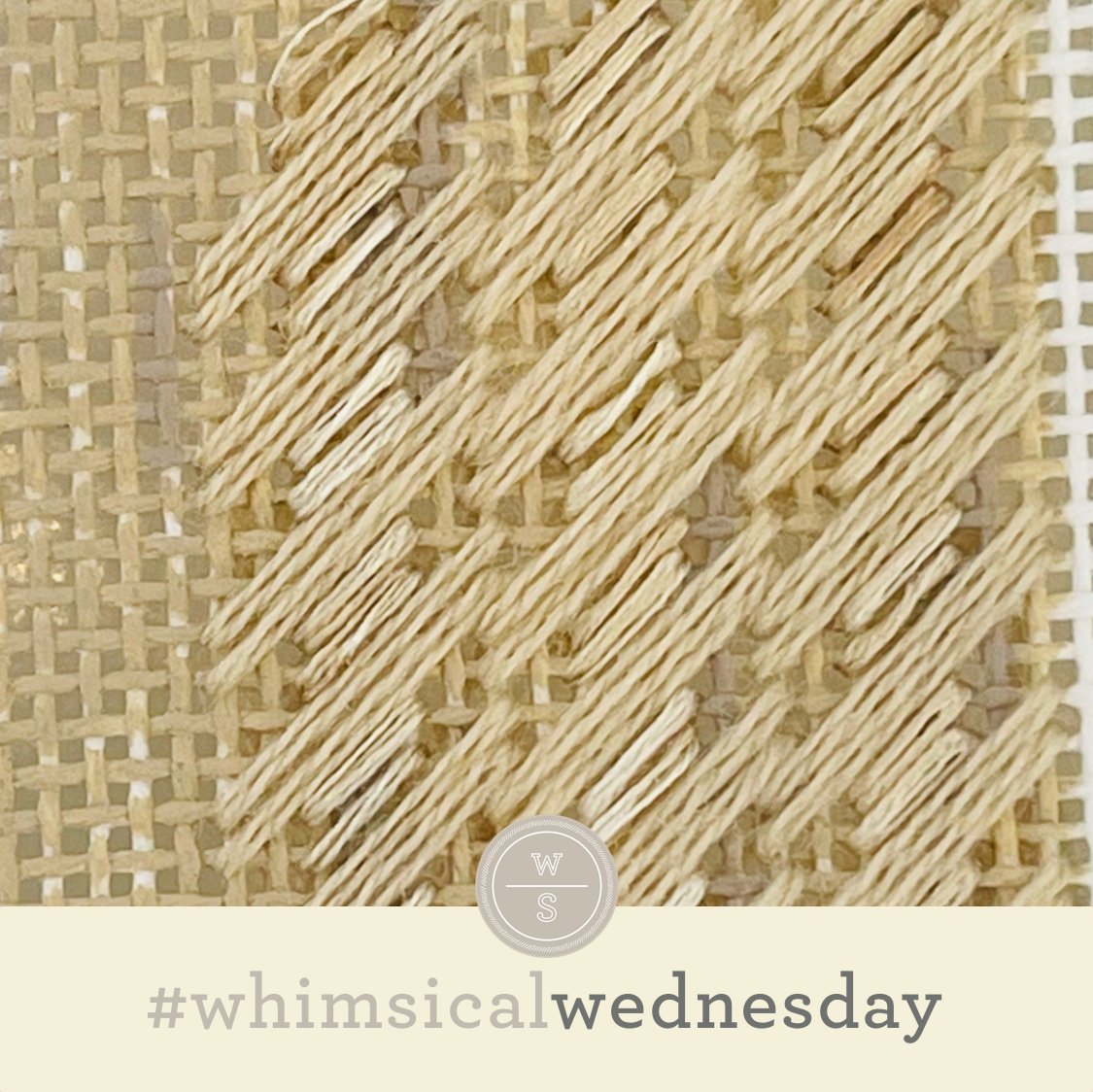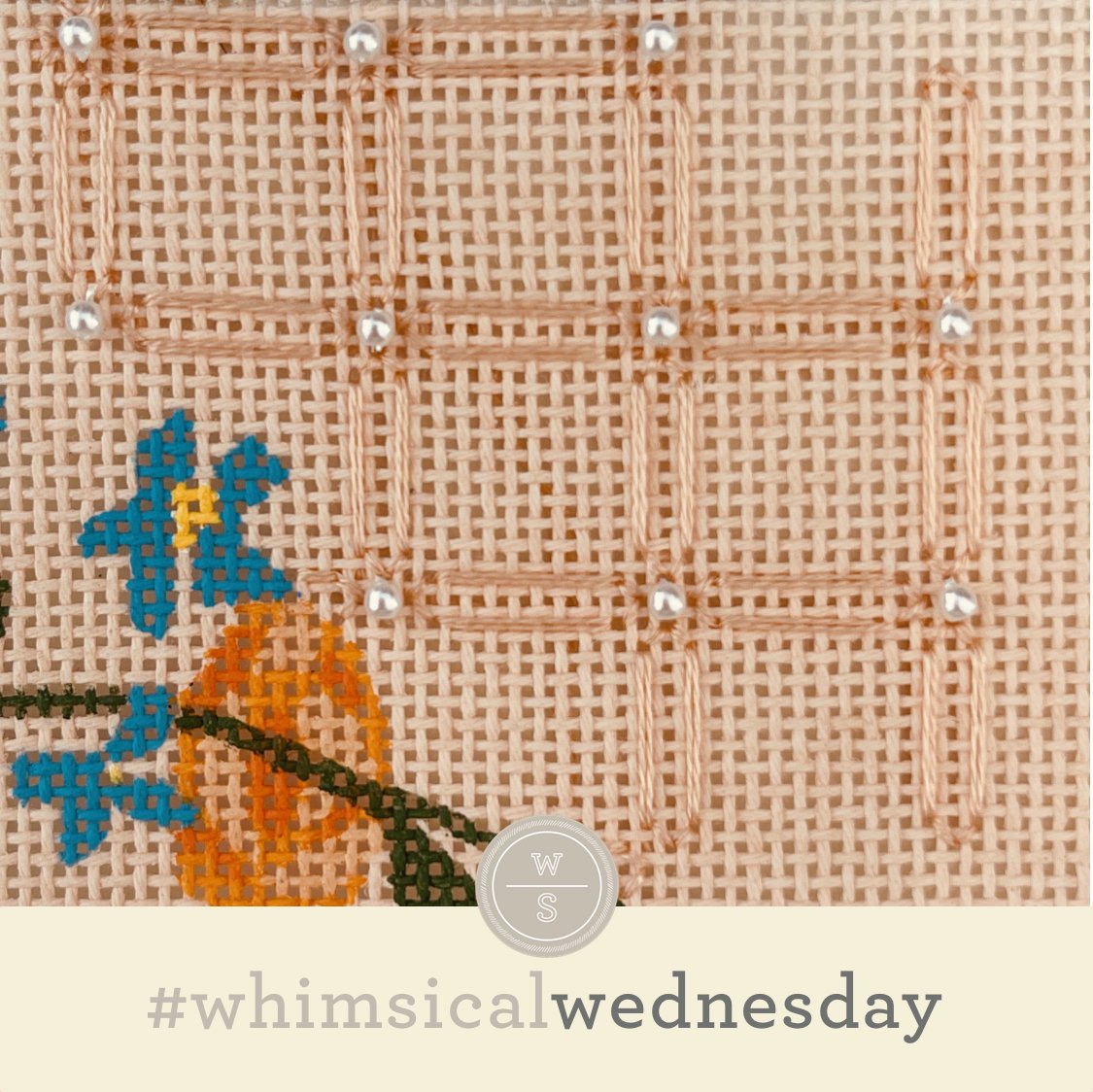One of my favorite stitches made an appearance last week on a student’s angel dress. So, needless to say, I started to play with it for this week’s post.
What is the Double V stitch? By clicking on the link, you can see the repeated element is pairs of diagonal stitches over two rows (in opposite directions). I took that repeated element and added them in each direction to create a circle of sorts. I added a pearl to connect the circles and a single Upright Cross in the center, and we have a new stitch! The stitched sample is me playing with blue Silk Lame 18 (black lines), white Grandeur (aqua lines), and a 2mm pearl (yellow circles).
Quick sidebar on why I used pearls in this stitched sample. First, I love pearls. With that out of the way, pearls are perfectly round (unlike seed beads). As you can see, I alternated the direction of the pearl depending on the direction of the connection. Pearls connecting circles on the horizontal axis were added horizontally, and pearls connected in columns were added vertically. Pearls won’t work for every application of this stitch and I do recommend doing the same thing with seed beads.
I am looking forward to using this as a dress on 18M with silk floss (black lines), a Kreinik metallic (aqua lines), and more pearls. I specified 18M because I see an opportunity to make the repeated element deeper by adding pairs of diagonal stitches. I tried to make it larger on 13M, and two pairs were about as deep as I could make it (in my opinion).
I hope you have the perfect spot for it. Have fun playing with it. I hope you enjoy it!
As you are auditioning stitches (from any stitch source), count the number of canvas threads on the diagram that match your mesh size. And there you have what an inch of the stitch will look like. Evaluate that against the area where you plan to use the stitch and make your final decision. If you start integrating this step into your stitch selection process, you may be surprised at how many stitches you think are large are much smaller than you realize.
By (sometimes) including this step in my own process, I find I am now integrating much longer stitches than I ever thought I would. I used to think a stitch six rows long was super big. I have very much changed my tune, which has helped me expand my creativity, especially for large-space stitches.
Today’s stitch diagram, along with all other #whimsicalwednesday and #smallspacesunday stitch diagrams, can also be found on a Pinterest board here. Be sure to follow whimsicalstitch.com on Facebook, Pinterest, Instagram, and Twitter.
If you like what you see on this blog, there's more. Mary’s Whimsical Stitches is a series of four books offering contemporary how-to collections of more than 200 stitches (in each volume) for all stitchers, regardless of skill level. All books include updated and sequenced diagrams from this blog, plus a collection of all-new stitches from private lessons and other class projects. Visit here to find a needlepoint retailer that carries my books.
New to needlepoint or looking for a refresher? Please download a handy how-to guide covering basic needlepoint stitches and stitch compensation techniques along with new top-line information on needlepoint materials and tools, how to handle threads, and other helpful needlepoint resources.
whimsicalstitch.com also sells Stitch Guides and Stitch Concepts for Melissa Shirley Designs, Zecca Designs, Sandra Gilmore, Purple Palm, Maggie, and Penny MacLeod, and many more. Click here to see the newest guides and click here to see the entire collection.
I hope you have the perfect spot for this stitch! Please enjoy! Have a wonderful #whimsicalwednesday!
A Note about Diagrams
I use color in diagrams to make them as clear as possible. The primary function of different colored lines is to illustrate a stitch sequence. For example, the layering of colors demonstrates you add them in that order. They can also provide ideas on integrating additional threads (one line for each color). Or, you can use the same thread for all color lines. That's where I encourage you to use your imagination for the space you are stitching!








